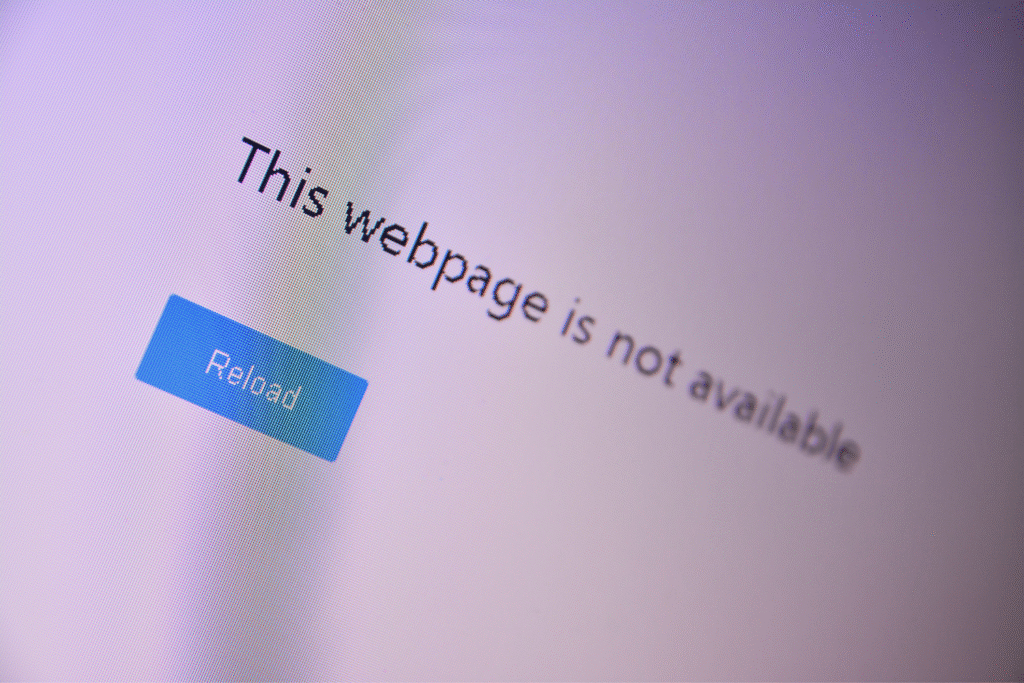Miss the right time or setup, and you risk no-shows, poor engagement, or confused candidates during Filipino interviews. Hiring Filipino professionals remotely involves more than just logging onto a call. You’re working across long time zone gaps, uneven internet access, and cultural expectations around formality and communication.
Choosing the wrong interview date, rushing the process, or failing to confirm time zones can lead to delays, lost candidates, or misread fit. This article provides a step-by-step guide to correctly scheduling Filipino interviews, preparing your tech setup, and creating a smoother interview experience for both sides.
Why Interview Timing and Setup Matter
Even with strong applicants, poor scheduling can ruin a good interview. Many Filipino citizens juggle day jobs, caregiving responsibilities, and limited internet access. One small mistake in timing or setup can lead to significant delays or missed appointment slots.
This is especially true for visa applicants who may be preparing for a visa interview, undergoing a medical exam, or working through different stages of the visa application process. A redesigned visa appointment system—with a more user-friendly interface and improved security features—still requires careful coordination. This is especially important when more than one person is involved or when supporting documents like a birth certificate, naturalization certificate, or a passport valid for at least six months are needed.
Whether you’re hiring for a remote role or coordinating with a candidate managing dual citizenship status, scheduling Filipino interviews with structure and clarity helps prevent confusion and avoids delays due to administrative processing.
The Risk of No-Shows or Poor Engagement
When the interview date doesn’t match a candidate’s peak energy hours, they may appear tired, distracted, or unprepared. Early morning or late-night interview times in Manila can reduce focus, especially for those who recently visited a visa application center or are recovering from a new medical exam.
For immigrant visa applicants or those tracking updates from the national visa center, overlapping tasks—like interview preparation, submitting required documents, or paying the application fee—can increase stress. Failing to confirm time zones or appointment details can easily lead to missed calls or incomplete sessions.
First Impressions Go Both Ways
Professionalism is a two-way street in remote interviews. U.S. employers who skip reminders, send unclear time slots or forget to confirm essential documents may appear disorganized.
Many Filipino applicants compare the process to their experience with the Embassy Manila or the visa appointment center, where the embassy launched a streamlined appointment system with clearer scheduling and status tracking. A smooth interview setup with clear communication helps build trust and aligns your hiring process with the professionalism expected in international hiring.

Time Zone Differences Between the U.S. and the Philippines
Scheduling across time zones can make or break an interview. The Philippines operates on GMT+8 and does not observe daylight saving time, which often creates a 12- to 16-hour time difference with the U.S.
Timing mistakes can easily lead to missed sessions, especially for visa applicants or dual citizens managing VAC appointments, medical exams, or embassy requests. Just like with the embassy appointment system or the PSA website used for birth and citizenship documents, data accuracy is critical. Even minor scheduling errors may result in reschedules, delays, or missed opportunities.
Standard Time Gap Overview
Understanding the U.S.–Philippines time difference prevents scheduling errors affecting status updates, supporting documents, and embassy Manila interactions.
- The Philippines operates on GMT+8, with no daylight saving time.
- U.S. time zones are typically 12 to 16 hours behind the Philippines.
- A 9 AM interview in EST equals 10 PM in Manila, while 4 PM PST equals 8 AM in Manila the next day.
- Use tools like World Time Buddy to track real-time changes and align with your intended date.
- Always confirm time zone details to avoid delays like those in the visa appointment system.
Best Time Slots for Interviews
Use this chart to help align schedules and avoid late-night or mid-day slumps for Filipino applicants:
| US Time Zone | Time Difference | Ideal Interview Times |
|---|---|---|
| EST (+13 hrs) | 7–9 AM or 7–9 PM EST | 8–10 PM or 8–10 AM Manila |
| PST (+16 hrs) | 4–6 AM or 4–6 PM PST | 8–10 PM or 8–10 AM Manila |
Scheduling within these windows helps avoid same-day visa appointment conflicts, long waits in the embassy waiting room, or last-minute issues due to overlapping embassy services or application processing in another country.
How to Choose the Best Time for Both Sides
Picking a time that works for both sides improves engagement and shows respect for the candidate’s schedule. The right timing can boost your chances of getting honest, focused answers.
Consider Candidate Energy Levels
Interviews during 2–4 PM in the Philippines may fall during a natural productivity drop. Candidates might struggle to focus or give thoughtful answers, even if they try their best.
Offer Multiple Time Options in Local Time
Giving Filipino candidates transparent and flexible scheduling choices shows respect and prevents delays. Use tools that display both time zones and make your invitation easy to follow.
- Share 2–3 interview options in Philippine time, not just your local time.
- Use Calendly, World Time Buddy, or other automatic time zone conversion tools.
- Clearly state the date and time in both the U.S. and Manila in every message.
- Mention if the slot falls on a Philippine holiday or weekend.
- Confirm the final appointment slot in writing once agreed.
Respect Candidates With Day Jobs or Freelance Gigs
Many applicants still work full-time or manage several contracts. Evening interviews (6–9 PM Manila) are often more practical. This respects their current work while helping you assess remote readiness.

Setting Up a Smooth Technical Experience
Even the best time slot won’t help if the tech fails. Technical issues are common, but most can be avoided with a few simple steps before the call.
Send Clear Instructions Ahead of Time
Filipino candidates appreciate clear guidance, especially when juggling multiple roles or navigating different time zones. Sending complete, easy-to-follow instructions helps reduce stress and prevents last-minute issues.
- Include the interview date, time, and platform link with both U.S. and Manila time clearly labeled.
- List any required documents, such as a valid passport, birth certificate, or supporting documents related to a visa application.
- Mention if the process includes photo and fingerprint capture, especially for dual citizens or immigrant visa applicants.
- Share a backup contact method, such as a mobile number or WhatsApp, in case of tech problems.
- Remind them to review all instructions and confirm their attendance in writing carefully.
Use Reliable Tools With a Backup Option
Technical issues can happen, especially in areas with spotty internet or power interruptions. Using trusted platforms with a backup option keeps the interview on track even if something goes wrong.
- Choose Zoom, Google Meet, or similar platforms that work well in the Philippines.
- Share a secondary option like Skype, WhatsApp, or Viber if the first platform fails.
- Ask the candidate which tools they’re most comfortable with during the scheduling process.
- Ensure your video and audio settings are tested on both tools before the call.
- Have both links ready and easily accessible in the same scheduling email.
Ask for a 5-Minute Tech Check Before the Call
A quick pre-call test can prevent mic, camera, or signal issues that often disrupt remote interviews. This small step shows you care about the candidate’s experience and allows them to feel more confident and prepared.
What to Ask Candidates to Prepare in Advance
Setting expectations ahead of time helps candidates avoid surprises and show up ready. Filipino citizens applying for remote roles may also manage visa-related steps, so clear instructions are essential.
Preparing in advance also reduces the chances of issues if they’re coordinating with a visa application center, VAC appointment, or consular officer, where timing and document requirements are strict.
Run a Speed Test and Join From a Quiet Space
Ask candidates to test their internet speed (at least 2 Mbps upload/download) and find a quiet, well-lit space before the call. For visa applicants, a stable and professional setup is just as important as it would be during a consular interview or while submitting documents to the Philippine Statistics Authority or paying the USCIS immigrant fee.
A calm, distraction-free environment helps them stay focused and engaged throughout the conversation.
Ensure Devices Are Charged and Ready
Many candidates use mobile data or older devices, especially those outside urban areas. Remind them to charge their phone or laptop to avoid disruptions fully.
This is especially important if they’re also handling dual citizenship requirements, completing a medical exam, or preparing their visa documents. Having everything ready reduces the risk of delays similar to those in the visa application process.
Share a Backup Communication Method (e.g., Phone or WhatsApp)
If the video call fails, switching to WhatsApp or phone ensures the interview continues without interruption.
Ask for a backup number or contact app ahead of time. This proactive step mirrors the backup systems often used for VAC appointments, embassy submissions, or when same-day appointment issues arise.

Interview Setup Tips for U.S. Employers
Your preparation matters just as much as the candidate’s. A solid interview setup avoids miscommunication and supports a smoother experience, especially for visa applicants or dual citizens navigating the new system with improved security features and stricter embassy rules.
Always Confirm Time Zones in Writing
Clearly state the interview date and time in both U.S. and Manila time, such as “9 AM EST / 10 PM Manila.”
This prevents confusion for candidates working through the visa application process or preparing to submit required documents to the Embassy of Manila.
Test Your Tech 15 Minutes Beforehand
Test your own camera, microphone, and internet connection before the interview starts.
This shows professionalism and reflects the level of readiness expected from a visa applicant in an embassy waiting room or during an immigrant visa appointment.
Keep Distractions and Background Noise Low
Turn off notifications, close extra tabs, and choose a quiet, clutter-free space.
A focused environment helps the candidate feel more at ease, just like preparing for a visa interview with all required documents, notes, and fees submitted correctly and on time.
Have Your Questions and Flow Ready
Structure matters in a remote interview, especially for candidates used to the formal setup of a visa appointment system or working through citizenship verification.
- Start with a short introduction and outline what to expect.
- Group questions into clear sections: background, skills, scenarios, and closing.
- Ask open-ended questions that give candidates space to respond.
- Keep the order logical to reduce confusion.
- End with time for questions and walk through the next steps, including note-taking, status updates, or submitted documents if relevant.
Red Flags to Watch During the Interview Setup Process
Some red flags suggest that a candidate may struggle in a remote role or during onboarding. This matters even more when your applicant is also managing a visa, preparing a naturalization certificate, or navigating an embassy request.
Late Replies to Scheduling Emails
Delays in confirming an interview date or appointment slot could point to poor time management. This becomes a bigger issue if the applicant is already juggling embassy documents, the visa appointment system, or medical exam scheduling.
Vague Answers About Tech Setup
If a candidate can’t confirm how they’ll connect or what platform they’ll use, it may mirror challenges seen in a new visa appointment system—lack of preparation, unclear process understanding, or confusion about required services.
Frequent Rescheduling Without a Clear Reason
Emergencies happen, but more than one last-minute change without a valid explanation could mean the person isn’t ready for structured work. This is especially important for visa applicants who need to pay their application fee, obtain a valid passport, or manage interviews with a consular officer. Issues here can delay onboarding, similar to refusal letters or incomplete visa application steps.

Get the Timing and Setup Right for Better Interviews
Getting interview timing and setup right isn’t just polite—it directly affects how well candidates perform and how successful your hiring process will be.
Scheduling Filipino interviews with clear time zone references, thoughtful time slots, and solid tech preparation helps prevent no-shows, miscommunication, and dropped calls. Confirming all details in writing, using a reliable system, and respecting both cultural and logistical factors show you’re a professional and trustworthy employer.
These small steps build trust, boost candidate engagement, and significantly improve your chances of making a strong, long-term hire.
Frequently Asked Questions
What is the best time to interview Filipino candidates remotely?
The best time for scheduling Filipino interviews is 8–10 AM or 8–10 PM Manila time to match energy levels and availability.
How do I schedule interviews across time zones?
Use tools like Calendly or World Time Buddy to align U.S. and Philippine time zones and avoid confusion.
What tools should I use to avoid confusion in scheduling?
Reliable tools like Zoom, Google Meet, and scheduling platforms with time zone features help streamline the visa interview or hiring process.
Should I confirm the interview time in both the U.S. and Manila?
Yes, always confirm the interview date and time in both the U.S. and Manila time zones to avoid missed appointments.
What setup should I expect from Filipino candidates during a remote interview?
Expect a quiet space, stable internet, backup contact methods, and prepared devices as part of a professional remote interview setup.
References
- Magadia, C. (2025, April 7). A Filipino’s guide to getting a U.S. visa. Tribune. https://tribune.net.ph/2025/04/07/a-filipinos-guide-to-getting-a-us-visa
- Philippine Statistics Authority. (n.d.). About us. https://rssocar.psa.gov.ph/about
- U.S. Citizenship and Immigration Services. (n.d.). USCIS immigrant fee: Before you start the payment process. https://my.uscis.gov/accounts/uscis-immigrant-fee/start/overview




